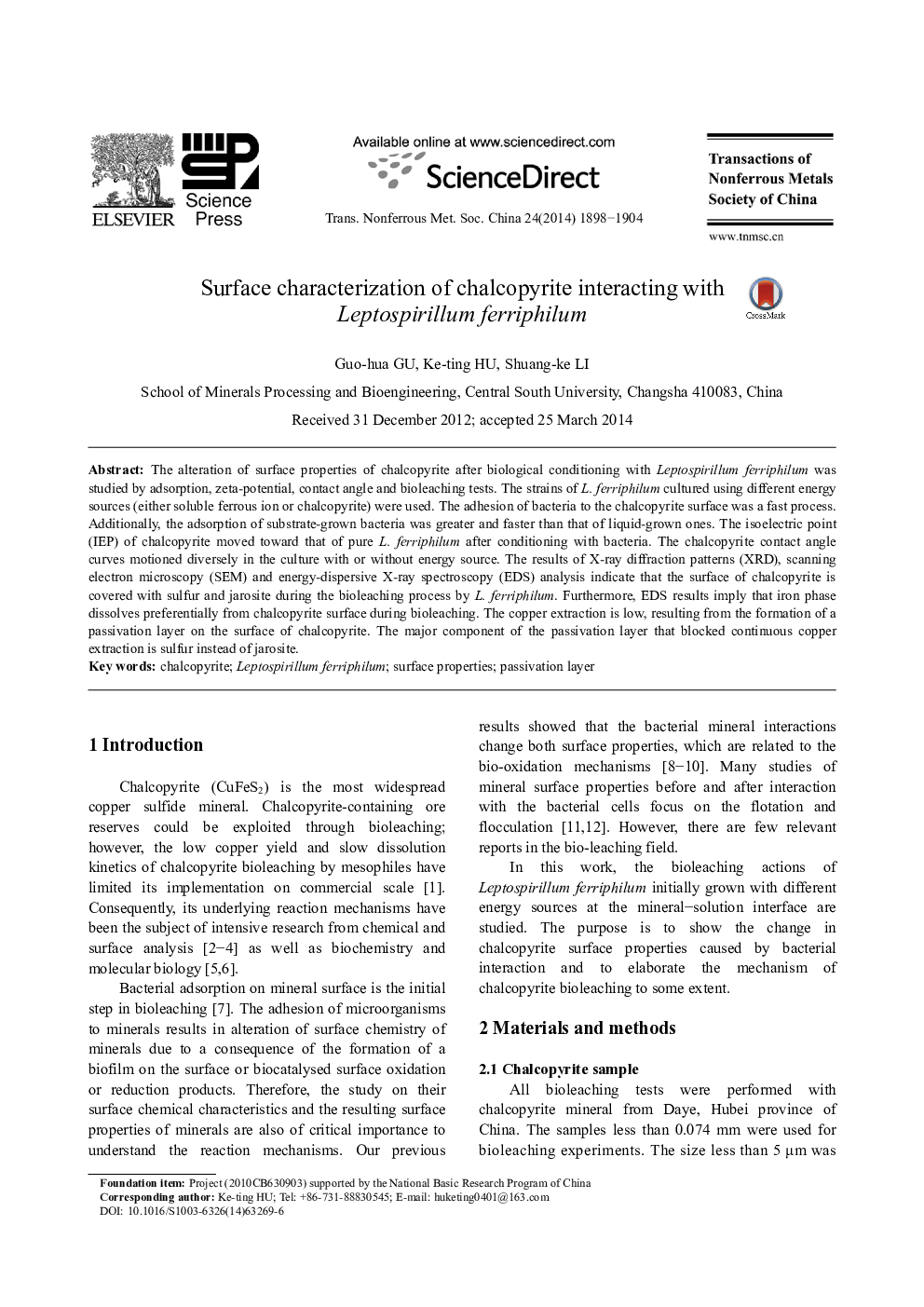| Article ID | Journal | Published Year | Pages | File Type |
|---|---|---|---|---|
| 1635973 | Transactions of Nonferrous Metals Society of China | 2014 | 7 Pages |
Abstract
The alteration of surface properties of chalcopyrite after biological conditioning with Leptospirillum ferriphilum was studied by adsorption, zeta-potential, contact angle and bioleaching tests. The strains of L. ferriphilum cultured using different energy sources (either soluble ferrous ion or chalcopyrite) were used. The adhesion of bacteria to the chalcopyrite surface was a fast process. Additionally, the adsorption of substrate-grown bacteria was greater and faster than that of liquid-grown ones. The isoelectric point (IEP) of chalcopyrite moved toward that of pure L. ferriphilum after conditioning with bacteria. The chalcopyrite contact angle curves motioned diversely in the culture with or without energy source. The results of X-ray diffraction patterns (XRD), scanning electron microscopy (SEM) and energy-dispersive X-ray spectroscopy (EDS) analysis indicate that the surface of chalcopyrite is covered with sulfur and jarosite during the bioleaching process by L. ferriphilum. Furthermore, EDS results imply that iron phase dissolves preferentially from chalcopyrite surface during bioleaching. The copper extraction is low, resulting from the formation of a passivation layer on the surface of chalcopyrite. The major component of the passivation layer that blocked continuous copper extraction is sulfur instead of jarosite.
Related Topics
Physical Sciences and Engineering
Materials Science
Metals and Alloys
Authors
Guo-hua GU, Ke-ting HU, Shuang-ke LI,
